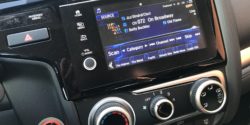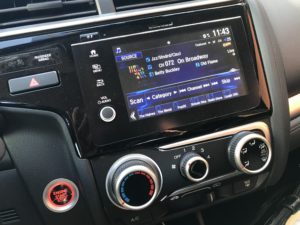 About six weeks ago I bought a persimmon colored Honda Fit. I love it. The car replaced a stick-shift Honda Civic with which I awkwardly navigated the hills of San Francisco for fourteen years. No more of that pseudo-James Dean nonsense. My Fit has automatic transmission and effortlessly putters up the Cool Gray City’s worst inclines without breaking a sweat. It also came with a free introductory subscription to SiriusXM satellite radio which I sampled and found, somewhat to my embarrassment, that I greatly enjoy.
About six weeks ago I bought a persimmon colored Honda Fit. I love it. The car replaced a stick-shift Honda Civic with which I awkwardly navigated the hills of San Francisco for fourteen years. No more of that pseudo-James Dean nonsense. My Fit has automatic transmission and effortlessly putters up the Cool Gray City’s worst inclines without breaking a sweat. It also came with a free introductory subscription to SiriusXM satellite radio which I sampled and found, somewhat to my embarrassment, that I greatly enjoy.
I say embarrassment because I have been writing about SiriusXM in one capacity or another for years. A decade ago I covered the controversial merger of the two companies for Ars Technica. I also included a section about satellite radio in my book Radio 2.0: Uploading the First Broadcast Medium. But I never really listened to SiriusXM that much, until now.
What won me over is that the service has concatenated a gaggle of music channels into a section that the panel on my SiriusXM interface calls “Jzz/Stndrd/Clscl.” These channels, which I can easily toggle through while driving the Fit, include a Metropolitan Opera channel, a show tunes channel, a 40s big band channel, about half a dozen jazz channels, and a symphony hall classics channel. Basically, this covers almost all the elements of what I call “hybrid highbrow” music, save a world music component.
I wish there was more classical fare (a classical soloists channel would be grand). And, as I just mentioned, a world music channel that aired Indian ragas and Egyptian oud ensembles would complete the concept. But the hosts are full of enthusiasm and charm and their selections are first rate. So I have to admit that I’m hooked . . .




